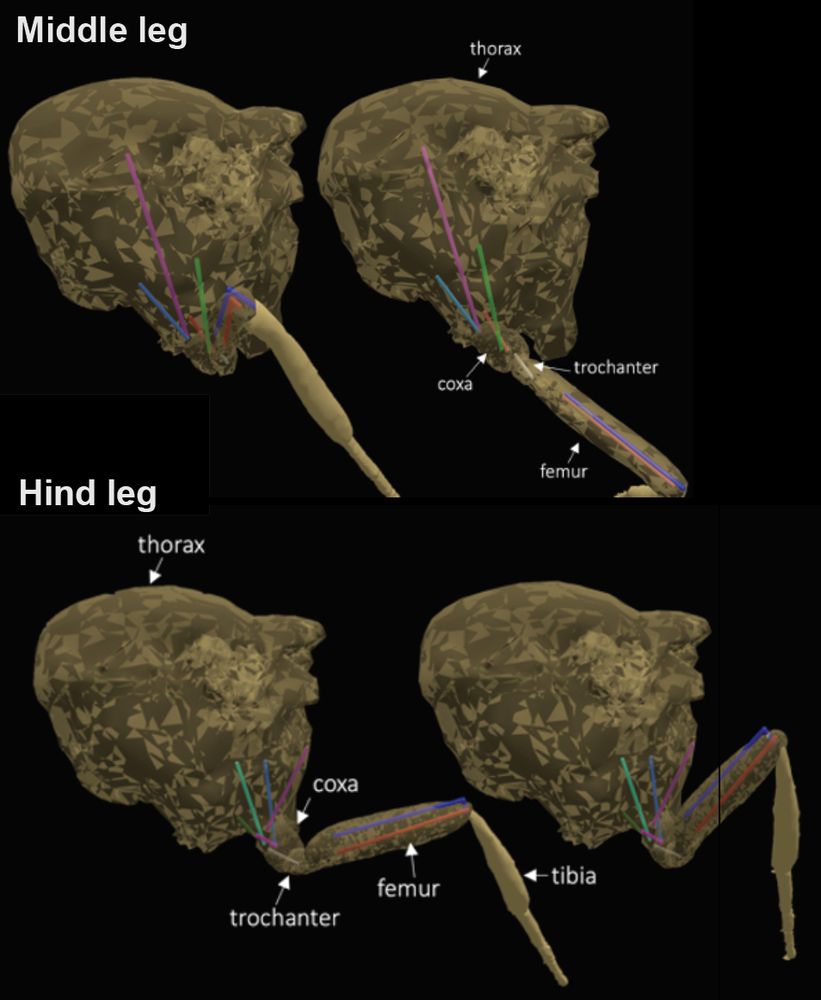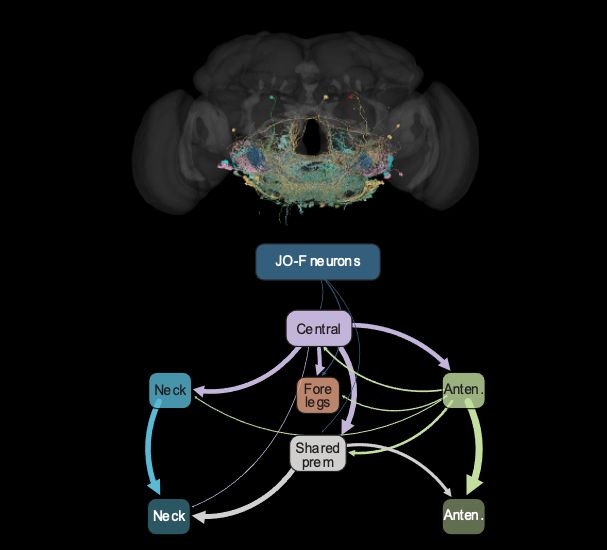


In plain terms: torque = force x moment arm.
In plain terms: torque = force x moment arm.
We’re excited to share the first 3D, data-driven musculoskeletal model of Drosophila legs based on Hill-type muscles, running in OpenSim and MuJoCo simulation environments.
Preprint: arxiv.org/abs/2509.06426
We’re excited to share the first 3D, data-driven musculoskeletal model of Drosophila legs based on Hill-type muscles, running in OpenSim and MuJoCo simulation environments.
Preprint: arxiv.org/abs/2509.06426
If you're at COSYNE, don't miss out on incredible talks and inspiring panel discussions at "Agent-Based Models in Neuroscience: Complex Planning, Embodiment, and Beyond" on March 31 :)
Check out the latest schedule: neuro-agent-models.github.io

If you're at COSYNE, don't miss out on incredible talks and inspiring panel discussions at "Agent-Based Models in Neuroscience: Complex Planning, Embodiment, and Beyond" on March 31 :)
Check out the latest schedule: neuro-agent-models.github.io
Broadcast inhibition: Suppresses targeted antennal movement to prevent conflicting actions. ⛔️

Broadcast inhibition: Suppresses targeted antennal movement to prevent conflicting actions. ⛔️


